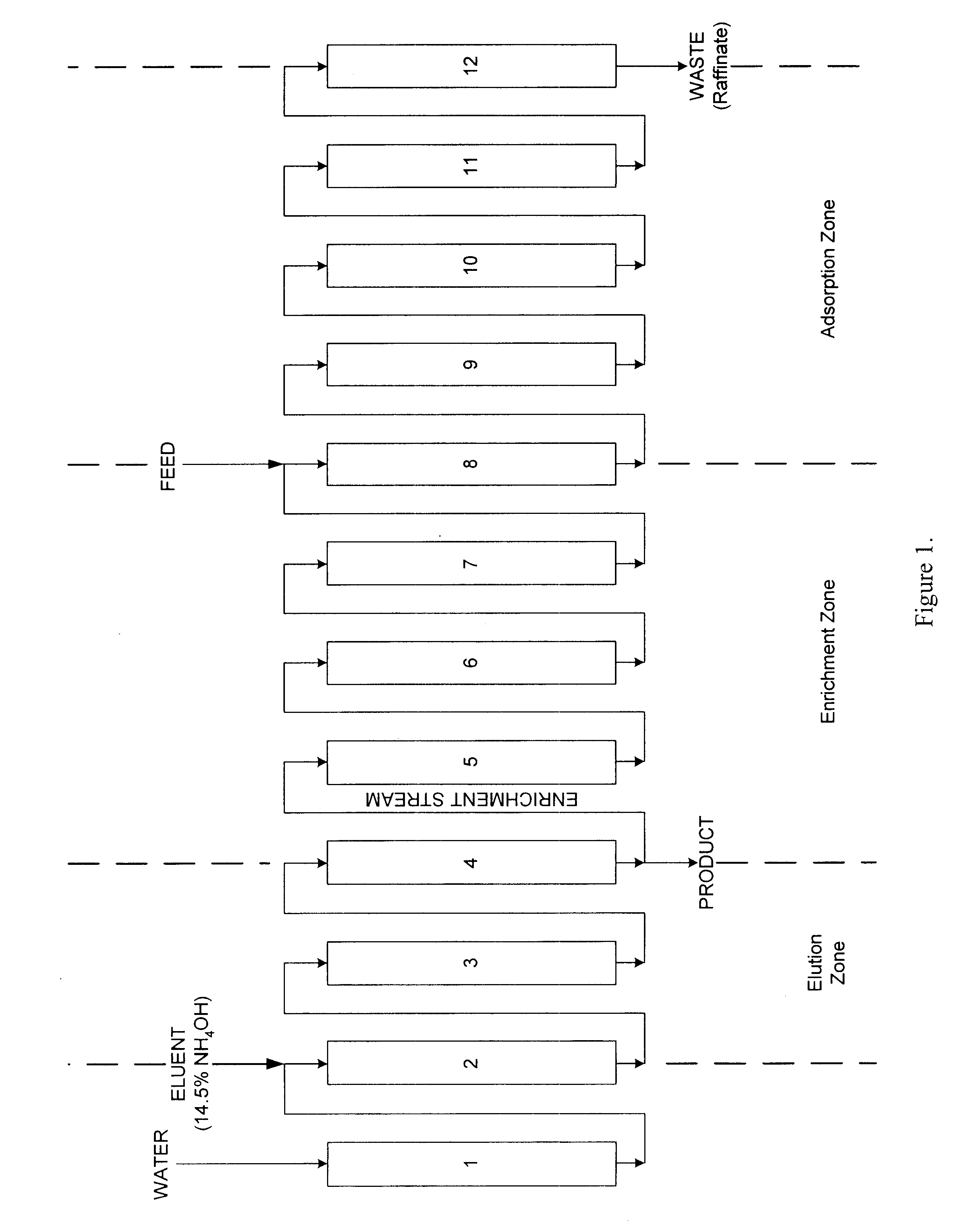Method for separating a basic amino acid from fermentation broth
a basic amino acid and fermentation broth technology, applied in the preparation of amino-carboxyl compounds, organic chemistry, chemistry apparatus and processes, etc., can solve the problem that the low level of separation obtained with traditional strong acid cation exchange resins with a high degree of cross-linkage may not be satisfactory for industrial-scale production
- Summary
- Abstract
- Description
- Claims
- Application Information
AI Technical Summary
Benefits of technology
Problems solved by technology
Method used
Image
Examples
Embodiment Construction
The resins used in this work were divided into two categories based on the degree of cross-linkage. Included in the first category were resins with a level of cross-linkage 8% and higher, termed HX (high cross-linkage) resins. These resins are traditionally used in conventional lysine separation processes. Examples of HX resins are C100 / 1633 (Purolite) and T311 (Thermax). In the second category were resins with a level of cross-linkage lower than 8%, termed LX (low cross-linkage) resins. Examples of LX resins are SK104 (Mitsubishi) and GC480 (Finex).
Simulated Moving Bed Operation. Simulated moving bed (SMB) experiments were conducted in 12 columns loaded with 300 ml of strong cation exchange resins and arranged in series with the configuration as shown in FIG. 1. The flow rates of water and 14.5% of NH.sub.4 OH were 6 cc / min and 33 cc / min respectively. Therefore, the concentration of NH.sub.4 OH solution was 2.2% for eluting the adsorbed lysine. A step of 9 minutes, equivalent to a ...
PUM
| Property | Measurement | Unit |
|---|---|---|
| flow rates | aaaaa | aaaaa |
| flow rates | aaaaa | aaaaa |
| resin flow rate | aaaaa | aaaaa |
Abstract
Description
Claims
Application Information
 Login to View More
Login to View More - R&D
- Intellectual Property
- Life Sciences
- Materials
- Tech Scout
- Unparalleled Data Quality
- Higher Quality Content
- 60% Fewer Hallucinations
Browse by: Latest US Patents, China's latest patents, Technical Efficacy Thesaurus, Application Domain, Technology Topic, Popular Technical Reports.
© 2025 PatSnap. All rights reserved.Legal|Privacy policy|Modern Slavery Act Transparency Statement|Sitemap|About US| Contact US: help@patsnap.com

